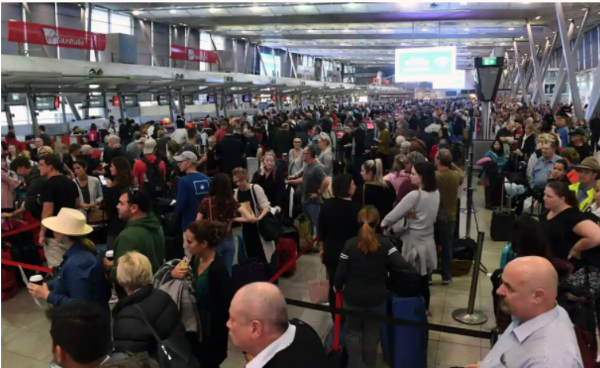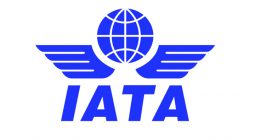The UN civil aviation agency ICAO announced that air traffic levels are operating at around two per cent above their high in 2019, before the COVID-19 pandemic grounded much of the world’s population in lockdown.
The International Civil Aviation Organization (ICAO) said that the numbers for the first quarter of 2024 indicate that airlines will sustain the return to profitability recorded in 2023.
“The commitment of Member States to aligning their pandemic responses with the guidance developed by the ICAO Council has been crucial to the recovery of their air services,” said Council president Salvatore Sciacchitano.
The analysis indicates that air traffic on most routes had already reached or surpassed pre-pandemic levels by the end of 2023.
The major regional routes which passed the 2019 mark by the end of last year were travel within Europe; Europe to/from North America, the Middle East, southwest Asia and Africa; North America to/from Latin America and the Caribbean, southwest Asia, Southeast Asia, and the Pacific; Middle East to/from Southwest Asia and Africa.
Most international Asian routes, with the exception of those serving southwest Asia, continue to have substantially lower levels of traffic in 2023 compared to pre-pandemic levels.
In Asia, similar rules might not work given its diverse geographic landscape.
Aviation is not alone when it comes to handling turbulence caused by fast-changing regulations.
Meanwhile, the International Air Transport Association (IATA) that represents 320 airlines comprising 83% of global air traffic released its 2023 Annual Safety Report for global aviation saying, there were no hull losses or fatal accidents involving passenger jet aircraft in 2023. However, there was a single fatal accident involving a turboprop aircraft, resulting in 72 fatalities. There were 37 million aircraft movements in 2023 (jet and turboprop), an increase of 17% on the previous year which shows aviation continues to make progress on safety with several 2023 parameters showing “best-ever” results.
The all-accident rate was 0.80 per million sectors in 2023 (one accident for every 1.26 million flights), an improvement from 1.30 in 2022 and the lowest rate in over a decade.
The fatality risk improved to 0.03 in 2023 from 0.11 in 2022 and 0.11 for the five years, 2019-2023. At this level of safety, on average a person would have to travel by air every day for 103,239 years to experience a fatal accident.
IATA member airlines and IATA Operational Safety Audit (IOSA) registered airlines experienced no fatal accidents in 2023.
A single fatal accident occurred in 2023, on a turboprop aircraft, resulting in 72 fatalities. This is reduced from five fatal accidents in 2022 and an improvement on the five-year average (2019-2023) which was five.
The 2023 accident rate improved compared to 2022 for all regions with the exceptions of North America and Asia Pacific. No regions experienced a jet hull loss in 2023.
Asia-Pacific recorded a fatal turboprop hull loss, a loss-of-control accident in Nepal in January 2023 with 72 fatalities. As a consequence, all regions except Asia-Pacific recorded a fatality risk of zero in 2023.
North America: The all-accident rate rose from 0.53 per million sectors in 2022 to 1.14 in 2023.
Asia-Pacific: The all-accident rate increased from 0.56 per million sectors in 2022 to 0.78 in 2023.
Africa: The all-accident rate improved from 10.88 per million sectors in 2022 to 6.38 in 2023, better than the 5-year average of 7.11. In 2023, there were no fatalities.
Middle East and North Africa: The all-accident rate improved from 1.30 accidents per million sectors in 2022 to 1.16 in 2023 and was also better than its 5-year average of 0.96.
Commonwealth of Independent States: The all-accident rate improved from 2.16 accidents per million sectors in 2022 to 1.09 in 2023. This rate is better than the region’s 5-year average of 3.19 accidents per million sectors.
Europe: The all-accident rate improved from 0.98 per million sectors in 2022 down to 0.48 accidents in 2023. This rate is better than the region’s 5-year average of 0.77 accidents per million sectors.
North Asia: The all-accident rate improved from 0.45 accidents per million sectors in 2022 to 0.00 in 2023. This was better than the region’s 5-year average of 0.16 accidents per million sectors. The fatality risk rate improved from 0.23 in 2022 to 0.00 in 2023.
Latin America and Caribbean: In 2023, the region reversed an increase in accidents from the previous year. The all-accident rate per million sectors improved from 4.47 in 2022 to 0.37 in 2023, better than the 5-year average of 1.91.
IATA Operational Safety Audit (IOSA) that currently has 425 operators including 100 non-IATA Members is the global industry standard for airline operational safety. It is also used by numerous authorities in their regulatory safety programs with
“IOSA will become an even more powerful tool to help airlines and regulators to maintain and improve very high levels of safety performance,” said Willie Walsh, IATA’s Director General.
(Based on UN News and ICAO’s report)









